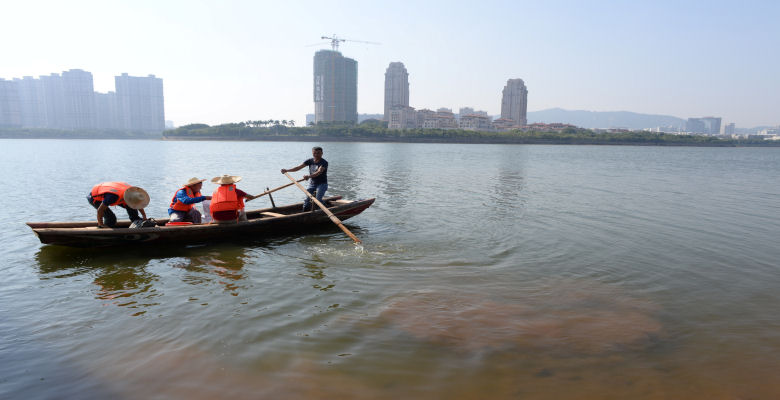Microbes, pollution and freshwater ecology in China
Research to help inform water quality monitoring

Working collaboratively with Dr Jun Yang, an aquatic microbiology expert at the Chinese Academy of Sciences, Institute of the Urban Environment based in Xiamen, Dr Dave Wilkinson from the School of Natural Science and Psychology has been undertaking research on the microbes which live in the lakes and reservoirs of China.
Dr Wilkinson, who has been researching the ecology of microorganisms since the 1980’s, recently returned from a five week long research visit to China.
He explained: "Due to the expansion of cities in coastal monsoonal China through the economic boom of the last couple of decades, access to adequate drinking water supplies an important issue.
"The study of microbes in the water can be an important way of assessing water quality. For example earlier this year we published a research paper showing that the bacteria responded less quickly than other microbial types to changes in water quality in reservoirs in sub-tropical China. Studies like this can help inform water quality monitoring.
"My research is really driven by a fascination in how the natural world works. One of my big interests is the large scale patterns of global microbial diversity. As China is a huge country, data from extensive surveys of the microbes living in lakes and reservoirs across the country – from tropical China in the south to Inner Mongolia in the north - have in the past few years have been extremely useful in research in this area.
"For several hundred years we have known that for animals and plants larger enough to see there are big global patterns – for example more species in the tropics and changes in the number of species as you ascend a mountain. Until very recently it has been extremely controversial if such patterns are also shown by the microbes living in soils and water.
"Our data from across China is helping to reveal that microbes show at least some of the patterns we are used to seeing in larger organisms. The artificial division, into microbes and large organisms, caused by the limits of human vision may not be as important as many scientists have assumed in the past’."
"There’s no doubt that I’m very happy to collaborate with Dr Wilkinson, and our continuous cooperation in microbial ecology has produced a series of exciting new discoveries," says Dr Jun Yang.
Dr Wilkinson will be talking about some of the results from his collaborative work with the CAS at the annual meeting of the British Ecological Society in Edinburgh on 16th December
Related story: Technology helps unlock secrets of rare bacteria


